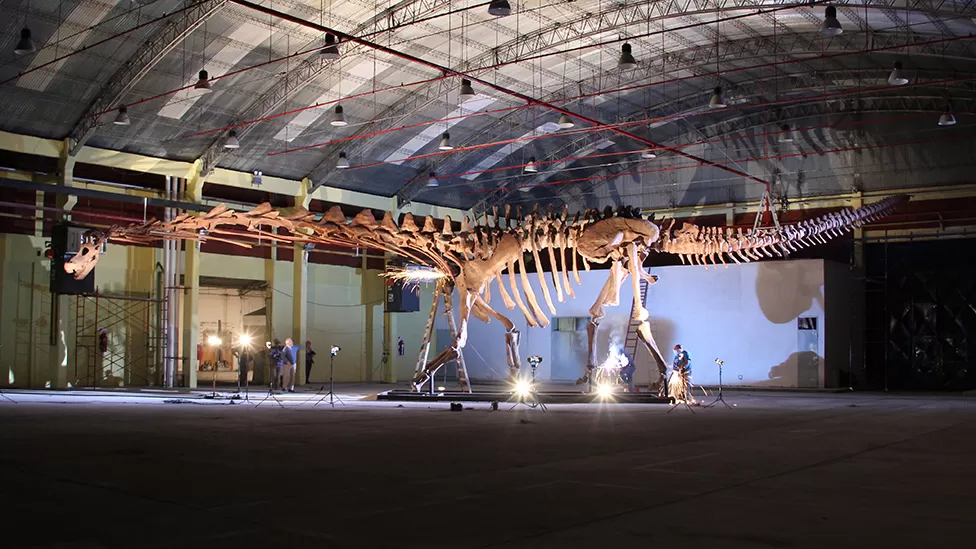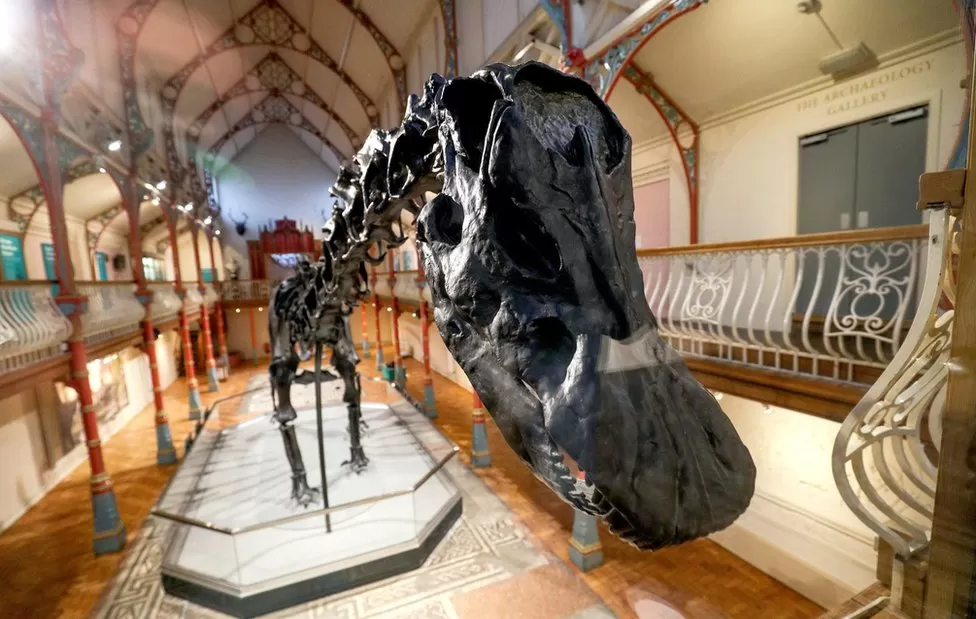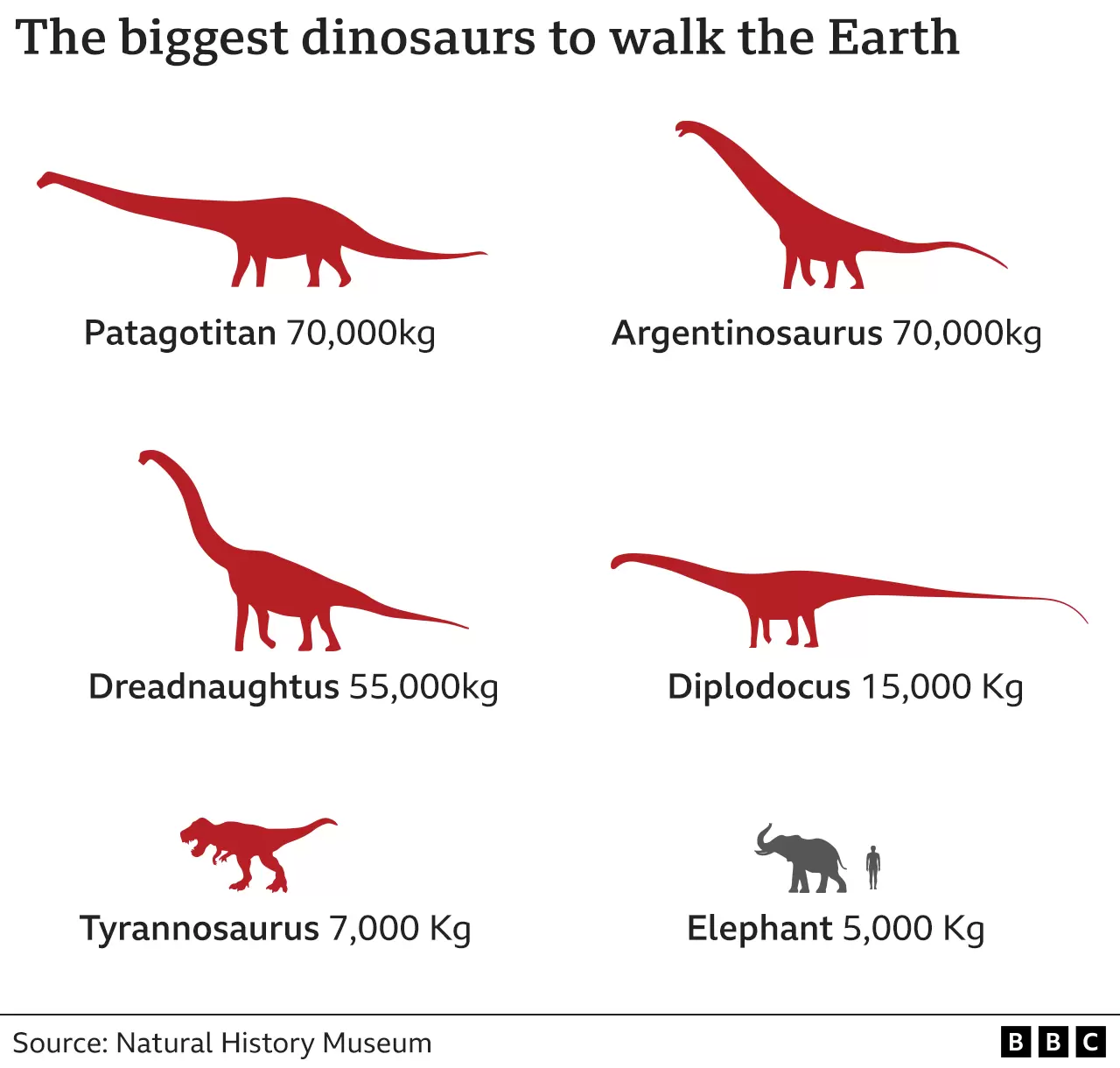A replica of what could have been the largest animal ever to walk on land is coming to London in the New Year. A cast of the sauropod dinosaur known as Patagotitan will go on show at the Natural History Museum – assuming it fits within the gallery space. Measuring some 35m (115ft) from nose to tail, the beast could have weighed up to 60 or 70 tonnes in life. “We should be able to get it in but there won’t be much wriggle room,” said exhibition developer Sinéad Marron.
The replica skeleton is being loaned from Argentina’s Museo Palaeontologic Egidio Feruglio (MEF), whose staff excavated the animal’s giant bones in 2014. Their exhumation of the 100m-year-old beast caused a sensation. A photo of one of the researchers lying alongside a femur, or thigh bone, to illustrate the animal’s great size was printed in newspapers around the world.

The BBC was lucky enough to be at the dig, and later produced a film with Sir David Attenborough called, appropriately, Attenborough And The Giant Dinosaur. MEF is also going to loan the actual femur, which is sure to make a remarkable selfie moment for NHM visitors. “That single leg bone measures 2.4m and weighs over 500 kilos,” said Ms Marron. “We’ll also have a full set of arm bones. “It’ll be the first time that those fossils and Patagotitan will be on display in Europe. MEF are being incredibly generous. They’re just really keen to showcase their science to the world and we’re so excited we’re the venue that they want to do that with.”

The cast will be accompanied by interactive exhibits that explain the life story of the exceptionally large Cretaceous sauropods known collectively as the titanosaurs. Animals like Patagotitan and another creature called Argentinosaurus were right up there. Who exactly was the biggest of them all is difficult to say. In part that’s because not all the bones for some of these dinosaurs have been found, making estimates of their true size a little uncertain.
Scientists don’t know why the titanosaurs were so big, but have a good idea as to how they developed their immense bulk. This probably had something to do with the relatively poor quality plant food available to them, which required a large digestive system to get the most out of it. Essentially, they were giant fermentation tanks on sturdy legs. Regular visitors to the NHM will know Dippy the dinosaur. That, too, is a sauropod. When people see Patagotitan, though, they’re likely to be amazed at the comparison.

“Patagotitan is a lot bigger than Dippy,” said museum palaeontologist Dr Paul Barrett. “I’m bit of rugby fan, so I’m going to use an analogy there. If we think of Patagotitan – it’s the prop forward in that rugby team, the big chunky guy at the front pushing against the other team; whereas Dippy would be the small nippy one at the back taking the ball. Dippy is a lightweight in comparison, weighing probably a third of Patagotitan.”

Dippy currently occupies the Waterhouse Gallery at the NHM. It’s having to vacate the space to make way for Patagotitan. “I don’t think Dippy will be put out,” said Sinéad Marron. “In any case, Dippy is about to head out on an adventure of their on, going on long term lone to another venue in the UK.” The exhibition – Titanosaur: Life as the biggest dinosaur – will open at the NHM on Friday 31 March 2023.
![]()





